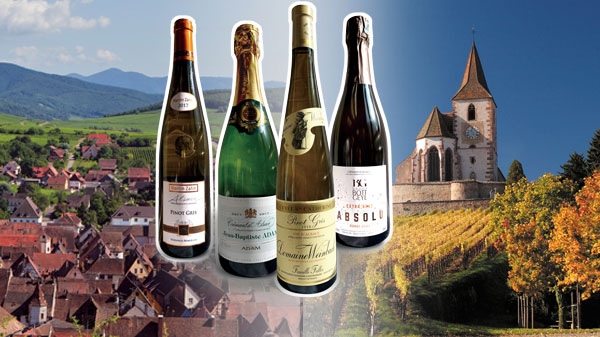
All-Ace Alsace: France’s lesser-known region produces winning wines of every kind
When handed a wine list at a suitably fine-dining establishment, chances are you’ll immediately check out the French Bordeauxs and Burgundies or, just possibly, look for an Aussie Shiraz or an Italian Barolo. There’s one Francophile region, however, that few tend to home in on – Alsace.

Although something of a newcomer to the wider wine world, the French have enjoyed a long love affair with the region’s output. In particular, Crémant d’Alsace has established itself as the country’s second favorite sparkling wine, outperformed only by the mighty Champagne. Meanwhile, its sundry other grape varietals have been frequently lauded by industry insiders for their elegance, flavour and value for money.

Set in the northeast of modern-day France, ownership of Alsace has shifted back and forth between its current compatriots and the Germans for nearly 300 years, with only the outcome of World War II seemingly deciding the matter. This storied legacy is apparent throughout the region, reflected in its traditions, its architecture and, of course, in its wines. Most notably, this has seen German Rieslings and Gewurztraminer planted alongside the more expected French Pinot Gris and Pinot Noirs.

Alsace’s optimum wine-growing zone actually lies to the south of Strasbourg, the regional capital. Nestled in the balmy bosom of the picturesque Vosges mountains, its vineyards are protected from the worst weather conditions. If you then add in the perpetually generous sunlight it enjoys, it should really be no surprise that it delivers grapes of exceptional ripeness, ones that seem to effortlessly balance texture, flavour and acidity.

While the territory’s most famous red wine is undoubtedly the Pinot Noir, it is in fact Alsace’s whites that dominate, accounting for some 90 percent of overall production, split between Riesling, Gewürztraminer, Pinot Blanc and Pinot Gris. Unlike the bulk of the French wine-making community, vintners here famously like to keep things simple. Accordingly, there are just two appellations – Alsace and Alsace Grand Cru, with the latter consisting of some 51 vineyards. It’s also notable that they’ve followed the New World trend of labelling by grape varietal, making purchasing these wines reassuringly straightforward.

Overall, it’s fair to say that the white varietals produced in Alsace, especially in recent years, have really come to the fore, making them perfect for food-pairing, regardless of whether you’re favouring traditional French fare or even Indian or Chinese cuisine. With each grape boasting its own unique flavour profile, selecting a bottle for your meal is simplicity itself – as long as you know what to look out for, of course.
Text: Tenzing Thondup







